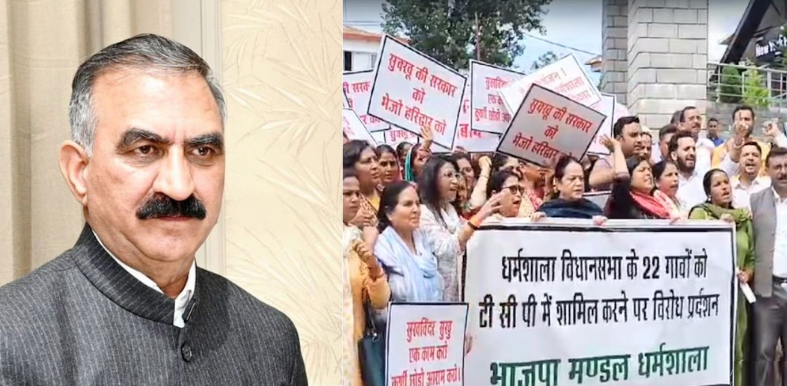What is Himachal’s TCP controversy and why has Sukhu’s close aide Ashish Butail joined protesters?

- Pre Paragliding World Cup Kicks Off in Bir Billing Valley, 105 Pilots from 32 Countries Competing - November 2, 2024
- Diwali business: HRTC earns record revenue - November 2, 2024
- Interest-Free Aid from Center Boosts Chandigarh-Baddi Rail Line Project - November 2, 2024
DHARAMSHALA: On August 20, the Himachal Pradesh government issued a new notification bringing 117 additional villages from Kangra district under the purview of the Town and Country Planning (TCP) Department. Since then, the region, particularly Palampur and Dharamshala, has been gripped by protests as people demand the withdrawal of this decision.
The controversy has become even more heated with Ashish Butail, Chief Parliamentary Secretary (CPS) who is seen close to Chief Minister Sukhvinder Singh Sukhu, publicly opposing his own government’s move.
About TCP and the latest controversy
The concept behind the TCP is to systematically develop villages through organised planning. It involves designating specific land for agriculture, parks, roads, green zones and public amenities like water and electricity. If buildings are not constructed according to TCP guidelines, action can be taken against property owners.
The idea seems beneficial, but the problem lies in its execution. Residents of the newly included villages argue that those already under the TCP’s jurisdiction are facing severe difficulties in getting approval for buildings.
Painful process for building map approvals
Protesters claim that in the TCP offices of Dharamshala and Palampur, the process of getting a building map approved is painfully slow and often takes six months to a year. Frequent objections raised by officials delay approvals, creating unnecessary hassles and breeding corruption. In 2020, for instance, a planning officer at Paonta Sahib in Sirmaur was arrested for accepting a Rs 1 lakh bribe.
Focus on maps instead of development
According to the TCP Act of 1977, the inclusion of new areas under the TCP should follow a structured process. Sections 6 to 11 of the Act clearly state that once a village is brought under the TCP, a regional plan must be drafted. This plan should define areas for agriculture, parks, forests and infrastructure like roads, water supply and electricity. After the plan is made, it must be opened to public review for 60 days before any further steps are taken.
However, the government’s recent notification appears to bypass these initial steps, focusing instead on maps for individual buildings. This has led to widespread discontent, as residents feel the government is placing the burden on them before any development or planning has even started.
Administrative gaps: Lack of infrastructure, staff
One of the key issues with the new notification is the lack of adequate infrastructure and staffs to handle the expanded TCP areas. Currently, there are only two TCP offices in Kangra district —in Dharamshala and Palampur. Before this notification, the Palampur office, having only six employees, was responsible for managing 52 villages.
With the inclusion of 93 more villages, these same employees will now be expected to handle a total of 145 villages, raising serious questions about the efficiency of the process. Similarly, in Dharamshala, 18 employees are now tasked with overseeing 55 villages, up from the previous 33.
Without expanding offices or increasing staff, the notification seems to be setting up the system for even greater delays and complications.
Government’s response: Exemptions, but no clear plan
When questioned about the rationale behind issuing the notification without first preparing a master plan, TCP officials from Shimla said that local residents would be granted exemptions under Section 30 of the TCP Act, allowing them to construct buildings without permission on plots up to 600 square metres.
However, this exemption only provides temporary relief. The larger issue remains unresolved: why are residents of areas already under the TCP being forced to pass building maps when a master plan has yet to be created? This raises serious doubts about the legitimacy of the current process. Are people being made to run around government offices for a system that isn’t even fully functional?




